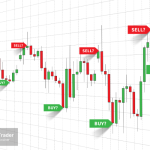[lɪˈkwɪdəti]
Liquidity refers to the ease with which an asset can be bought or sold in the market without significantly impacting its price.
What is Liquidity?
Liquidity in trading refers to the level of ease with which an asset can be bought or sold in the market, without causing a significant impact on its price. Essentially, a highly liquid asset can be traded quickly and with little effect on its price, due to the availability of buyers and sellers.
On the other hand, an illiquid asset may be harder to buy or sell, and could result in larger price spreads or extended wait times to complete a trade. The overall liquidity of a market can be influenced by various factors, such as trading volume, the number of market participants, and the size of the bid-ask spread. The presence of market makers and high-frequency traders can help to increase liquidity in a market.
Key Takeaways
- Liquidity is important for traders and investors as it determines how easily and quickly they can buy or sell an asset in the market.
- Highly liquid assets are preferred by traders because they can be traded with minimal impact on their price, whereas illiquid assets can be more challenging to trade and may cause significant price movements.
- Factors that affect liquidity include trading volume, market participants, bid-ask spread, and the presence of market makers and high-frequency traders.
- In general, larger and more actively traded markets tend to be more liquid, while smaller or less actively traded markets may have lower liquidity.
- Traders and investors should be aware of the liquidity of the assets they are trading, as it can affect their ability to execute trades quickly and at a favorable price, and can impact their overall trading strategies and risk management.
Example of Liquidity
A trader wants to buy 100 shares of a particular stock that is highly liquid. In this case, there are many other market participants willing to sell the stock, so the trader can easily buy the shares without significantly affecting the stock's price. The bid-ask spread is also likely to be relatively narrow, which means the trader can buy the stock at a price that is very close to the current market price.
Back to Glossary.






